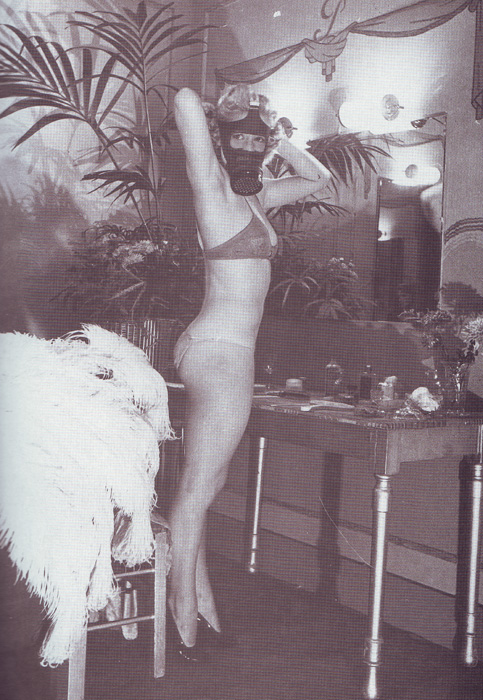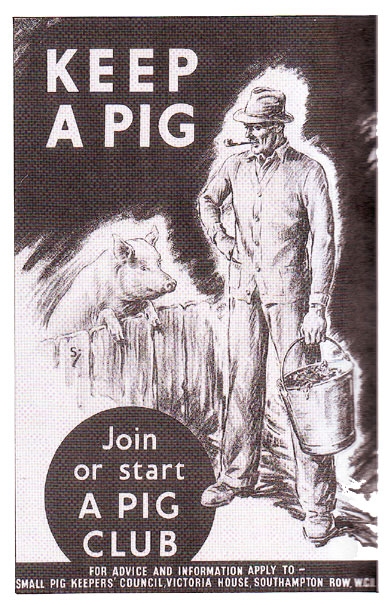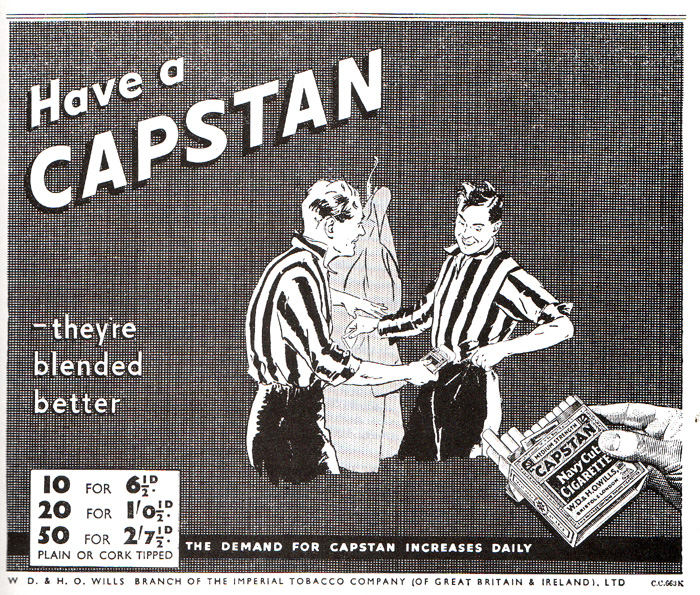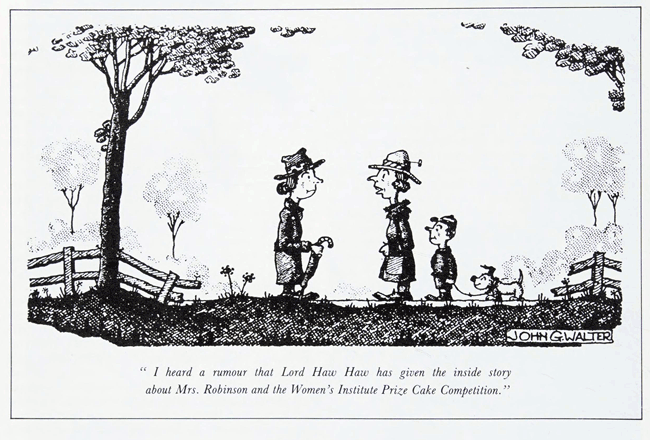|
|
Post by dem on Dec 15, 2007 19:10:13 GMT
There's far more to Haining's 'non-fiction' output than this little lot, but I've tried to concentrate on cataloguing those items with horror and/ or supernatural connotations. Steve has done the majority of the Witchcraft & Black Magic spadework on Devil Worship In Britain thread, but I'll reproduce the titles here for convenience sake. If you can plug any of the gaps, please do! Witchcraft and Black MagicDevil Worship In Britain (Corgi, 1964) With A. V. SellwoodWitchcraft and Black Magic (Hamlyn, 1971) Anatomy of Witchcraft (Souvenir, 1972: Tandem, 1974) The Warlock's Book: Secrets of Black Magic from the Ancient Grimoires (W. H. Allen, 1972). The Witchcraft Papers : Contemporary Records of the Witchcraft Hysteria in Essex, 1560-1700 (Robert Hale, 1974) An Illustrated History of Witchcraft (NEL, 1975: Pyramid, 1976) Ghosts, Vampires, UnexplainedThe Dracula Scrapbook (Nel, 1976) ** Superstitions (Sidgwick and Jackson, 1979) Ghosts: The Illustrated History (Sidgwick & Jackson, London, 1981) A Dictionary of Ghost Lore (Prentice-Hall, 1984) The Dracula Centenary Book (Souvenir, 1987) --- reissued as: The Dracula Scrapbook, Bounty, 1992) The Supernatural Coast: Unexplained Mysteries of East Anglia (Robert Hale, 1992) The Un-dead: the Legend of Bram Stoker and Dracula (Constable, 1997) With Peter Tremayne A Dictionary of Vampires (Robert Hale, 2000) A Dictionary of Ghosts (Robert Hale, 1999) ** There were a few of these Scrapbook's and files including: The Dracula Scrapbook (Nel, 1976) The Frankenstein File, (Nel, 1977) The Edgar Allan Poe Scrapbook (Nel, 1977) The H. G. Wells Scrapbook (Nel, 1978) The Sherlock Holmes Scrapbook (1987) MelodramaFrederick Hazleton - Sweeney Todd: The Demon Barber Of Fleet Street (W. H. Allen, 1980) The Legend and Bizarre Crimes of Spring Heeled Jack (Muller, 1977) Mystery and Horrible Murders of Sweeney Todd, the Demon Barber of Fleet Street (Muller, 1979) Sweeney Todd: The Real Story of the Demon Barber of Fleet Street (Robson, 1998) The Man Who Was Frankenstein (Muller, 1979) The English Highwayman (Robert Hale, 1991) Buried Passions: Maria Marten & the Red Barn Murder (Spearman, 1980: Image Publications, 1992) Pulp IllustrationsTerror!: History of Horror Illustrations from the Pulp Magazines (Sphere, 1976) --- reissued as: A Pictorial History of Horror Stories (Treasure Press, 1985) The Art of Horror Stories: Two Hundred Years of Spine-chilling Illustrations (Chartwell, 1986) Mystery!: An Illustrated History of Crime and Detective Fiction (Souvenir Press, 1977) --- reissued as: The Art of Mystery and Detective Stories: The Best Illustrations from Over a Century of Crime Fiction (Treasure Press, 1986) True Mysteries [Young Adult] The Monster Trap and Other True Mysteries (Armada, 1976) The Screaming Skull and Other True Mysteries (Armada,1979) The Vampire Terror and Other True Mysteries (Armada,1984) Hell Hound and Other True Mysteries (Armada,1980) The Restless Bones: And Other True Mysteries (Armada,1978) And we haven't even touched on the single-author collections yet! |
|
|
|
Post by pulphack on Mar 15, 2011 13:53:25 GMT
Resurrected this as I picked up The Art Of Mystery And Detective Stories last week for a couple of quid, and it's the usual Haining ragbag of facts and half facts in the page or two of each chapter that preceds the illustrations. Some of the captions are a bit wonky, too, but there's no knocking the artwork which is lovely, and shows a depth of genre knowledge that was very impressive when I first read this about 20 years ago. Having not hand a copy for at least half that long, and having read a whole lot more in the genre since, it surprised me how cavalier he was with facts (what, PH? surely not!). but having said that, i do wonder if it was the old journo in him, who couldn't resist blurring a bit of truth and telling half the story in order to make it look better on the page.
Anyrate, all that aside, worth picking up. Never seen the horror counterpart, but would have that one like a shot on the evidence of this.
|
|
|
|
Post by dem on Mar 15, 2011 21:36:09 GMT
Gorgeous books, the pair of them, mr bugg. The paperback edition of Terror! A History Of Horror Illustrations From The Pulp Magazines/ Pictorial History Of Horror, made a huge impression on me and must cop a huge proportion of the blame for the way I turned out. In the late eighties, used to have Terror! on pretty much perpetual loan from the tiny Cubitt Town Library until eventually finding a copy in the Fantasy Center. Was already vaguely familiar with Marion Brundage and Virgil Finlay's work for Weird Tales, but Lee Coye, "the master of the moldering corpse" came as a revelation. It was also the first place I ever heard of the "sex & sadism" pulps and Haining's reproductions of John Newton Howitt covers made me a fan of both him and the weird menace sub-genre before I'd even read any of the stories. I used Terror! as some kind of manual for what I ought to be looking for outside of collections of Victorian horror stories and Weird Tales reprints. |
|
|
|
Post by lemming13 on Mar 16, 2011 10:39:25 GMT
You chaps will know, I have no doubt (and you're more reliable than Google); I read a non-fiction work about Sawney Bean and other cannibals back in the 80s, and I'm pretty sure it was by Haining. I am fairly sure it was where I first learned about kuru, the laughing sickness, so there must have been some stuff about Pacific area cannibals. Am I right, or is there another author I should blame for my morbid interest in anthropophagy?
|
|
|
|
Post by dem on Mar 16, 2011 10:51:59 GMT
Not sure if Haining ever got around to Sawney Beane, Lemmy, though I'd love to be proved wrong. is this the book you were thinking of? Ronald Holmes - The Legend Of Sawney Beane (NEL Mentor, 1976)  Tony Masero Tony Masero I've a hardback of it somewhere, can scan up the cover if this one doesn't ring any bells. Come to think of it, Haining did write a *ahem* non-fiction book on the subject of Cannibal Killers (Robinson, 2008). Might that be it? |
|
|
|
Post by lemming13 on Mar 17, 2011 8:45:22 GMT
Bingo - Cannibal Killers it is. I knew I could count on you. Must get hold of that Ronald Holmes thing, though, looks very juicy. Yum yum yum.
|
|
|
|
Post by dem on Dec 31, 2013 7:10:54 GMT
Peter Haining - The Day War Broke Out (W. H. Allen, 1989) A Balmy September Day
Drama in the House
Operation Pied Piper
Life in the Unlit City
An Army in Gas Masks
On the Home Front
Digging for Victory
Motoring the Feather-Weight Way
Travelling on the Blackout Special
Keep in Touch with the Wireless
When the TV Screens went Blank
The Show Must Go On
The Press Fights for Freedom
Tittle-Tattle Lost the Battle
Love Makes the World Go Round
Drink Up for Victory
The Last Score for Sport
Animals Go to War
The Pen and the Sword
Insuring the Future Blurb: At 11. 15 am on Sunday, 3 September 1939, Neville Chamberlain broadcast to the British nation, "... Britain is at war with Germany'.
There was, at that moment, a large, hushed audience of Britons gathered around their wireless sets to hear the Prime Minister. In the main, these people still clung to the hope that the Government would find some last-minute means of avoiding conflict. But when, just a few minutes after Chamberlain's speech had ended, sirens began to wail across Southern England and the population was obliged to seek the protection of air-raid shelters for the very first time, they knew such hopes had foundered.
The lives of many people in Britain had, in fact, already been widely disrupted by the dawn of that Sunday morning. The massive evacuation of school children, mothers and babies from the danger areas of big cities to the countryside was largely over. Preparations in the event of attack had also been organised, with the black-out already in place in many homes and gas masks ready for use by front doors. Over the large cities, huge balloons shaped like silver larvae hung suspended, offering the promise of protection from enemy planes.
The impact of war was to change the British way of life profoundly – the armed forces made plans for the call-up of servicemen between the ages of eighteen and forty-one, and for others there would be factory and munitions work. It would not be long before rationing and austerity began to bite. Despite this, all Britons were determined that life would go on.
In the pages which follow, the reader will find described the impact and immediate effects of the start of the war on day-to-day life in Britain, as well as the way it affected the ordinary man, woman a child of the country. The war of the statesmen and the soldiers has been fully told; this is the war of the people, or more particularly how they confronted it and prepared for what was to come.
The Day War Broke Out is a commemoration of the British people going to war – a book that will provoke nostalgia among those who lived through those unique autumn days, as well as admiration from those who were born afterwards and owe their freedom to the nation's pride, courage and resilience. For the war which began fifty years ago was just as surely won at home in Britain as it was on any of the far-flung battlefields of the world.
Peter Haining has written many books for W.H. Allen and other well-known publishers. Recent publications include Dr Who: 25 Glorious Years, TV Sherlock Holmes, and James Bond – A Celebration. In 1985 he wrote The Spitfire Log, which charted the development of the Spitfire and which was published by Souvenir Press. The author lives in Boxford, near Colchester, Essex.The great man applies his patented The Dracula Scrapbook technique to the earliest days of WWII. As you might expect, the illustrative material is a joy - photo's, propaganda posters, public information hand-sheets, newspaper clippings, ads, radio & TV listings, pivotal moments in the wartime career of the Daily Mirror's celebrated Jane, etc. Haining's commentary on the civilian's war is both informative and entertaining, perhaps most notably in the (too brief) chapter on the days newspapers and popular comics. Unlike today, the readers were encouraged to do their bit for Britain by boozing and smoking their way through a time of austerity: "Thousands are turning to Guinness", "If Stanley Holloway offered you a cigarette it would be a De Reszke - of course!" Provided you were rich enough, you "deserved" a luxury holiday, so where better to get away from it all than lovely South Africa? Alternatively, with a copy of "Big hearted" Arthur Askey's songbook, you could have a jolly old war huddled around the piano in the local pub and no jobs-worth telling you to put your fag out. Things were going to get worse beyond the public's wildest nightmares but if The Day War Broke Out is the least accurate, those first weeks of the conflict were met with cheery acceptance rather than forebodings of doom.  Fetish clubs thrived .... Fetish clubs thrived ....  The first known Vault poster appeared.... The first known Vault poster appeared....  .... and footballers were groovy. .... and footballers were groovy.
|
|
|
|
Post by ripper on Jan 1, 2014 18:15:43 GMT
Of Peter Haining's non-fiction works, I have, I believe, read only Cannibal Killers and Spring-Heeled Jack. The latter was residant in my local library for years and I loaned it three or four times. It was the first time I had come across Spring-Heeled Jack.
The Day War Broke Out sounds a very interesting read. I can well believe that ordinary people just didn't understand how the war was going to affect them. WW1 had seen only limited bombing raids by enemy aircraft and airships, and even the horrors of bombing seen in the Spanish Civil War probably didn't prepare people for just what an onslaught cities like London would face from the Luftwaffe. Also, even though the war began in September 1939, it wasn't really until the following late spring that the conflict began in true earnest, and until then the war may well have seemed a long way away.
|
|
|
|
Post by dem on Apr 17, 2021 19:32:16 GMT
More from the master. Peter Haining - A Dictionary of Ghosts (Dorset, 1993: originally Robert Hale, 1981) Blurb: The world of ghosts has puzzled and intrigued mankind since the dawn of lime. The belief that the spirits of the departed can reappear on earth and haunt their descendants or the neighbourhood in which they died is found all over the world, and despite the most intensive investigation for centuries, it still remains as big an enigma today as it has ever been.
The author has compiled a volume that will prove invaluable for all students of the paranormal, for ghost hunters and for the general reader seeking information on any aspect of the world of ghosts.Peter Haining - Superstitions (Sidgwick & Jackson, 1979) Acknowledgements
The World of the Superstitious
Superstition and You
Beliefs of the Home
The Lore of Earth and sky
The Secret World of Animals
The Mystique of Love and Marriage
The Tradition of Special Days
Superstition at Work and Leisure
Peril at Sea
Omens of Death
IndexBlurb: A history and contemporary examination of superstitions past and present, lavishly illustrated.
A lot of people don't think they're superstitious. but they still wouldn't walk under a ladder, have anything to do with the number 13, or forget to throw a pinch of salt over their left shoulder after spilling some.
They're in good company. People from primitive times to the sophisticated men and women of the twentieth century have all had more than a sneaking regard for such things. Shakespeare believed that his 400-year-old bed contributed to his success; Dr Samuel Johnson never walked on the cracks between paving stones; Mussolini had a lifelong fear of the Evil Eye and refused to sit beside anyone he suspected possessed this sinister influence; the Duke of Edinburgh always taps his polo helmet seven times before a game...
It is all the very devil of a business, and as Peter Haining shows in this book, the Evil One has had a hand in many superstitions. Religion, naturally enough. has played a major part in their formation, but as these pages also show, not a few have evolved from painstaking observation of the elements. Indeed, there is much that is factual as well as fantastic in the lore of superstition. and the author has gone to considerable lengths to note and study those beliefs and to explain their origins and evolution.
He tells how the rabbit's foot charm has become regarded as lucky because of the rabbit's noted sexual prowess; explains the origin of people tying a knot in their handkerchief to jog their memory; explains why newlyweds traditionally have an old boot tied to their honeymoon car, why breaking a mirror brings bad luck, why being given a knife and not paying for it is risky..
Superstitions ranges across a vast spectrum of beliefs; it includes hundreds of different examples and provides in words complemented by superb illustrations a most revealing survey of this endlessly fascinating subject.Peter Haining - The Fortune Hunter's Guide (Sidgewick & Jackson, 1975) Jack de Manio -Foreword
Divining Rod, Detector or Sheer Hard Work?
Gold
Diamonds
Pearls
Sapphires and Precious Stones
Uranium, Silver and Valuable Metals
Buried Treasure
Beachcombing
The Golden Wrecks
Attic Hunting
Unclaimed Money and Land
Wealth at the Bottom of the Garden
Searching the Neighbourhood
Oil, Orchids and Mink Coats
IndexBlurb: THE FORTUNE-HUNTER’S GUIDE
PETER HAINING
Foreword by Jack de Manio
Great Britain probably contains more treasure than any other country. Gold, uranium, silver, pearls, diamonds, sapphires, amethysts, emeralds, not to mention topaz, garnets, and opals, are all there for the finding, and The Fortune-Hunters Guide will tell you where and how to find them. It will guide you to treasure with or without the modern aids of mechanical detectors, or the more traditional hazel twigs or sheep with yellow-tinged wool (rural legend has it that this indicates they have been lying on gold deposits).
And if attic hunting, beach combing, probing wrecks or simply panning for gold doesn't appeal, there’s always oil prospecting or even mink trapping.
No finance or special equipment is needed, either so beat the rising price of the cost of living with Peter Haining’s invaluable book! |
|
|
|
Post by dem on Feb 7, 2024 11:37:12 GMT
Peter Haining - Spitfire Summer: The People's-eye View of the Battle of Britain (W. H. Allen, 1990) Introduction
The Battle at 'Hellfire Corner'
Out of the Frying Pan, into the Spitfire
The Men they called 'Dowding's Chicks'
Mrs Cardwell Captures a German Airman
'England - We are Coming!'
The Eagle Will Not Land!
Bloody Thursday - and the Great Parachute Ruse
Mrs England and Mr Hitler's Miscalculation
A Hot Time in the Old Country Tonight
The Graveyard of Enemy Dreams
'The Whole Bloody World's on Fire!'
The End of Summer - The Dawn of Victory
Postscript
Acknowledgements.Spitfire Summer is an evocative record of the British people's experiences of the Battle of Britain and is published to coincide with the 50th Anniversary of those summer days in 1940, when Hitler was poised for invasion across the Channel and the nation's future hung in the balance. It includes eyewitness accounts and recollections, contemporary photographs and illustrations, newspaper and radio reports of the time, as well as posters, cartoons and advertisements. This is a book of emotional and personal memories rather than cold statistics (although these are included where appropriate) and it is above all a tribute to one of the proudest moments in British history.Sequel of sorts to the improbably jovial The Day War Broke Out. It is 14th July 1940, and the German's long-threatened bombing campaign finally gets underway at Dover, signalling an end to the eight month 'phony war'. The Spitfires are ready for them. Spitfire Summer takes us through the first weeks of the Battle of Britain, a story told in War office approved newspaper reports, posters, public appeals ('To the women of Britain - Give up your aluminium') advertisements, ephemera (a glossary of RAF slang) etc. A full complement of evocative photographs include Churchill in Al Capone fancy dress promoting the Tommy Gun — "the gangster's favourite weapon" — as recently imported from the US); a home guard preparing Molotov cocktails in his back yard; a sign outside a bomb-wrecked Kent off-licence reassuring that it remains opens regardless ("Fags & Beer we are all here"); the children's salvage corps scavenging scrap metal for Spitfires; a gallery of mostly cheerful looking captured German airmen; smily ground staff clearing the brick strewn pitch at Millwall FC's aptly named the Den. As with its predecessor, almost everybody looks as if they're having the time of their lives, though the several shots of the city in flames and homes reduced to rubble — many banned at the time for fear of lowering morale — remind us this was far from the case.  John G. Walter John G. Walter
|
|
toff
Crab On The Rampage
 
Posts: 78
|
Post by toff on Feb 7, 2024 17:36:08 GMT
Had to look up Bovril. I have trouble picturing it as anything other than beef bouillon and finding that not particularly appealing, though I guess it's not quite the same thing. The name's apparent origin is surprising. |
|
|
|
Post by Swampirella on Feb 7, 2024 17:45:10 GMT
Had to look up Bovril. I have trouble picturing it as anything other than beef bouillon and finding that not particularly appealing, though I guess it's not quite the same thing. The name's apparent origin is surprising. I’m glad I’m not the only one who had to look it up, although several years ago now. Personally I like chicken or beef bouillon now and then. |
|
|
|
Post by andydecker on Feb 7, 2024 19:14:24 GMT
Also had to look it up.  It is still available, as I have seen. |
|
|
|
Post by Mike Brough on Feb 8, 2024 8:48:37 GMT
We always have a small jar on the go (have you seen the price of the big one?). Our dog insists on having his breakfast biscuits soaked in Bovril and hot water before he'll go near them.
|
|
|
|
Post by ripper on Feb 12, 2024 14:15:38 GMT
It was more of a Hurricane summer, since during the Battle of Britain there were considerably more Hurricanes than Spitfires in RAF Fighter Command service.
|
|